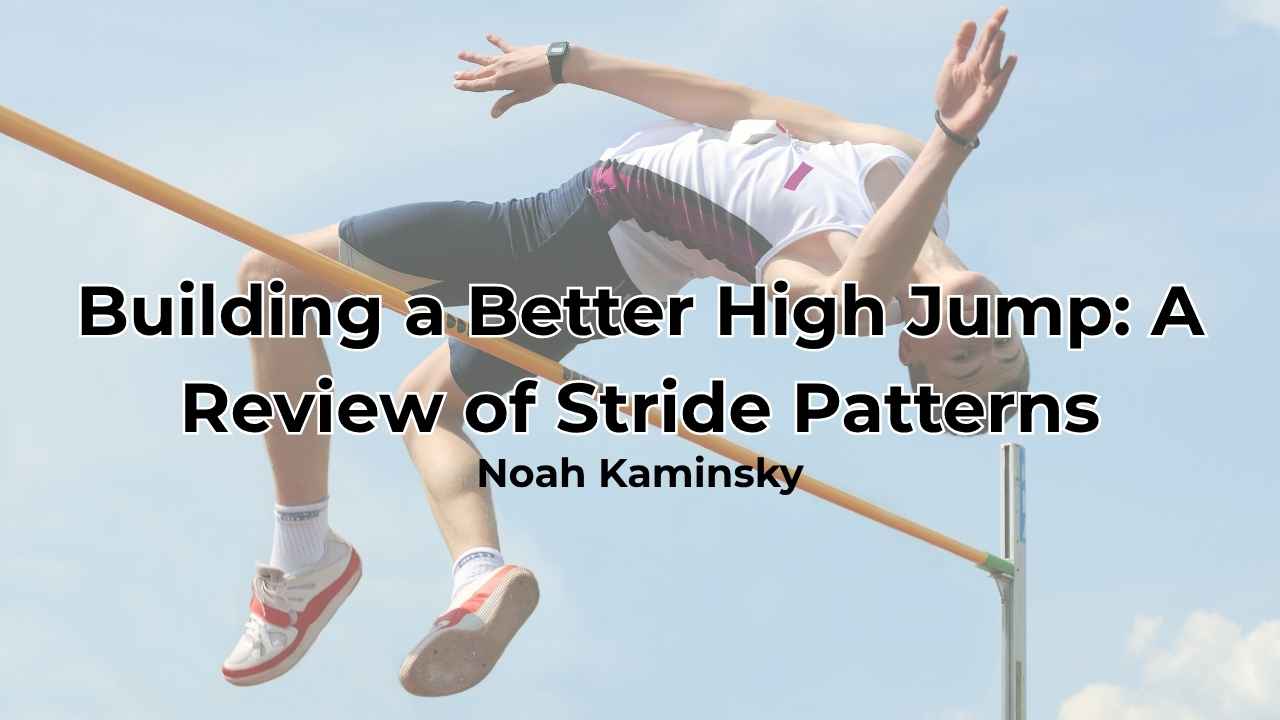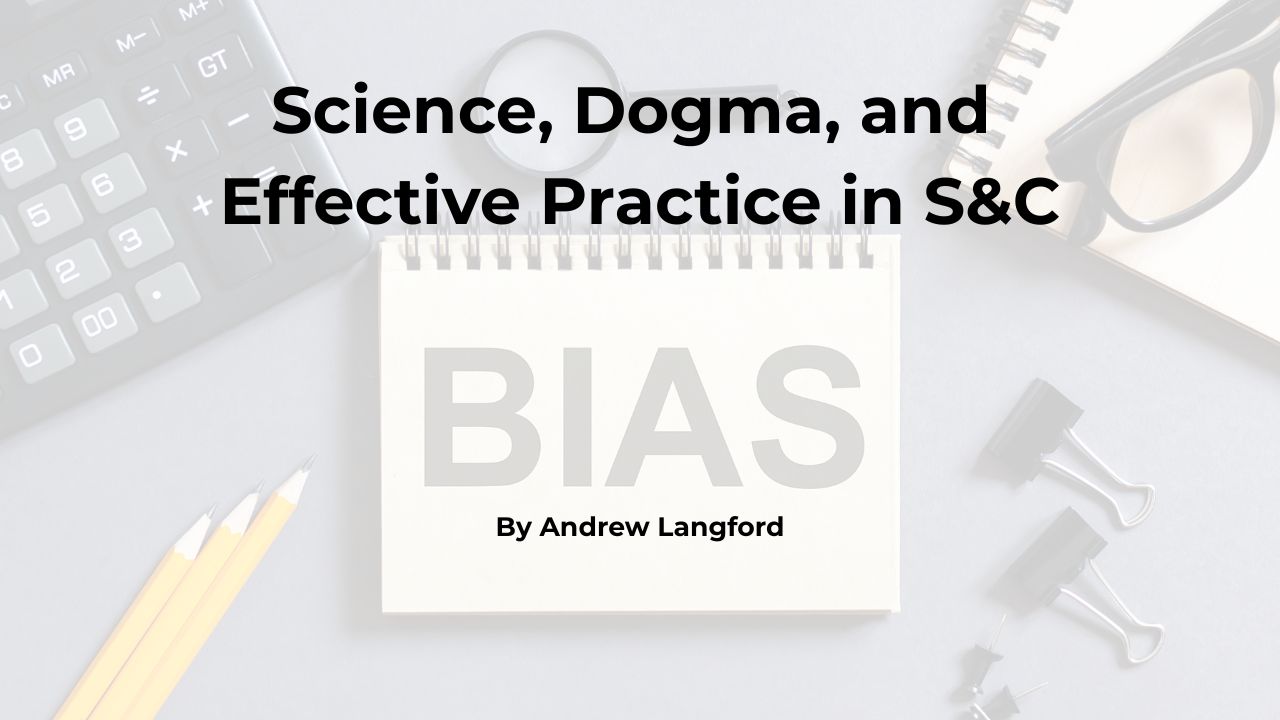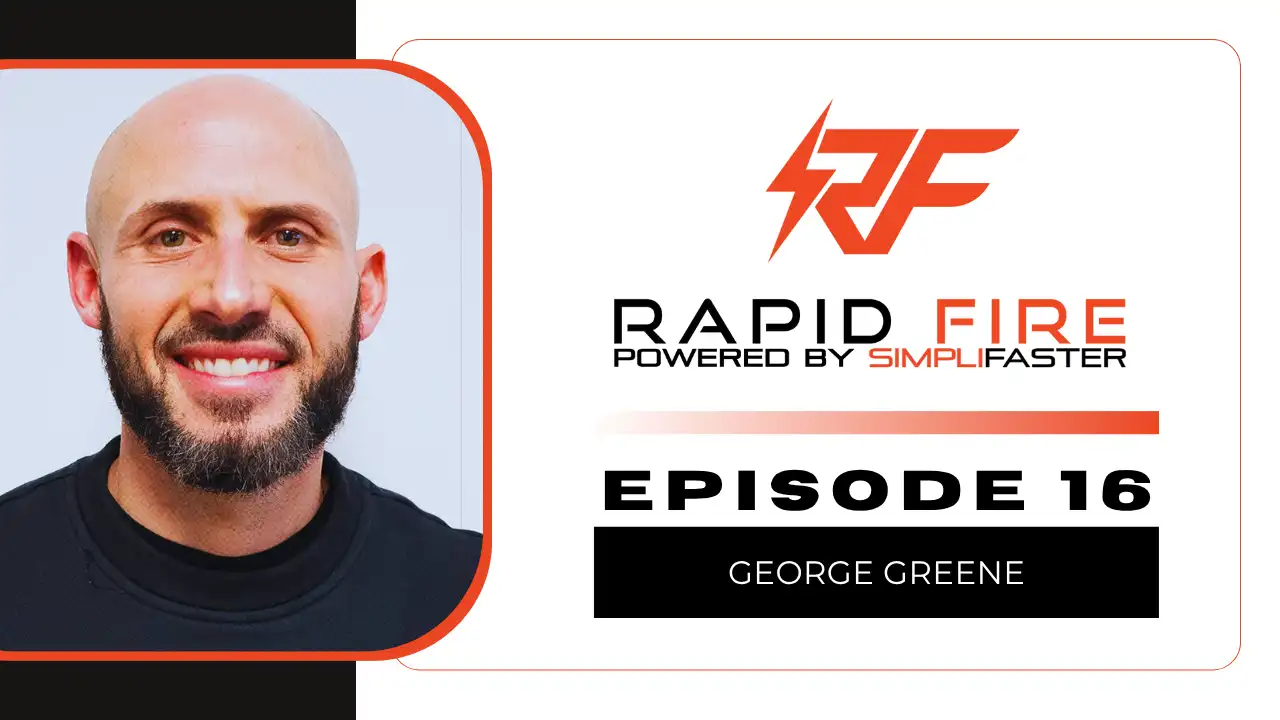[mashshare]
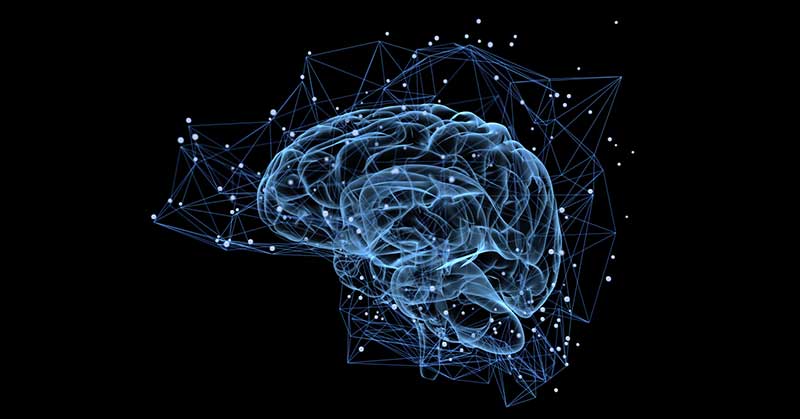
Coaches are the ultimate teachers and, as a profession, being called a coach is a true honor. Instruction with athletes is both an art and a science, but over the last decade resources have simply not been available or digestible for the majority of coaches. Several very abstract and extremely complex concepts are tossed around haphazardly in the field, but not much evidence exists of those principles being applied.
This article is not a how-to guide, or a list of which motor-learning principles are important to use. Instead, I make the case that much of the science isn’t as applicable as it may seem. Conversely, another point to be made is that the available science has a lot of very useful concepts that we are missing out on, and I will share the information that really helped me during frustrating periods in my own journey.
Why Guided Discovery Is Coaching at Its Finest
Thought I expect a visceral response, I will say that I believe in coordination and efficient body motion, but the term “movement quality” needs to go. We need to put pseudoscience to bed, get clarity on what athletic movement is, and articulate what coaches are responsible for. We currently live in a world where quantification is king. Qualitative evaluation needs to be reviewed very carefully, as anyone can claim nearly anything in sports training. Movement quality is tossed into conversations as a lazy explanation for why an athlete is coordinated or able to perform a task with sufficient criteria, but it’s not specific enough to help coaches.
My biggest mistake as a coach was trying to teach athletes to move better using my own experience and knowledge. I would see an error and try to correct it, but in reality, the error was my fault to begin with. Sure, sometimes an athlete needs a little verbal instruction or, at times, sports medicine to improve function, but the most common problems are created by coaches trying to address what is wrong instead of allowing athletes to discover what they can do right. We see this all the time, as a visual error stings our pride when visitors are watching and we rush to “clean movement” up or use an excuse that is laced with borderline science.
When I spent time with those I believed were master coaches, the motor-learning improvements were textbook. However, they did not stem from the available science, and were in opposition to what I learned in the research. I was frightened, as all of the information I felt was the foundation to instruction looked to be wrong, and only a finite number of coaches seem to know the undercurrent of teaching really well. I was afraid that I would be on my own.
In my mind, the best coaches are the directors of a great movie, simply allowing everyone else to shine. Today, we see a different and ineffective mindset, as coaches looking to advance their careers place emphasis on a teacher-centric model—accompanied by daily pontifications on why their brilliant thinking is making athletes better—instead of focusing on what they learned from their own athletes. My core belief is that our job is to simply share what we know and give it away to the athlete. When we guide the athlete, instead of attempting to be a cross between a drill instructor and motor-learning guru, they will discover the deep skills they already have and improve in their sport.
Concepts in Motor-Learning Research Coaches Need to Use
Coaches can read the “Cliff’s Notes” on any motor-learning topic from a blog or journal article, but the best way to really learn motor-learning theory is to read the books, listen to the professors and experts, and then see if the ivory tower works in the trenches. I have read a lot of fascinating research, including impressive works on some very abstract and complex concepts that are not for the layperson. It’s exciting and sometimes makes us feel smart to read dynamic systems theory and self-organizing research, but the goal in coaching is to be effective, not sound smart. I, myself, have never felt like I wasted time reading a text from Gabriele Wulf, but her textbook isn’t going to make a high school coach turn an average group of athletes into a superstar team overnight.
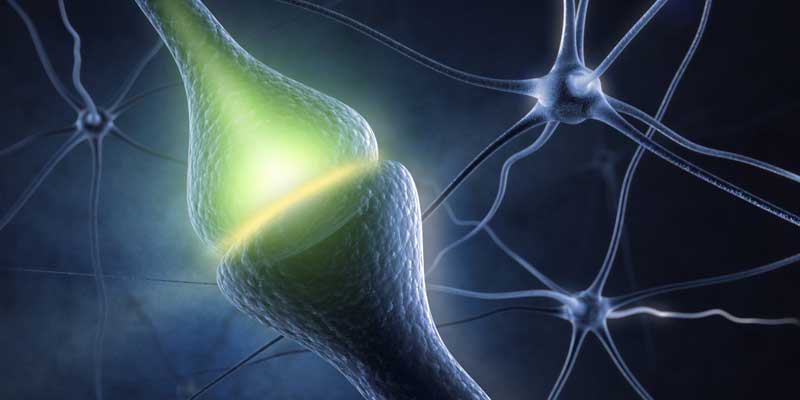
If you want buzzwords or something sexy that will make noise on social media, I can give you a list of awesome concepts that will be perfect for a TED talk, but they will likely leave you disappointed. Here are some strong pedagogical concepts I have learned by watching some of the best coaches, as well as the most important coaches in the world—physical education teachers—use them with all ages. There are dozens of great tools for teaching, but the point of these three examples is to demonstrate that it’s about the learner, not about the teacher.
Athlete Observation: Expert models have some limitations and caveats that make athlete demonstration and observation imperfect, but it’s extremely potent. What I learned from doing rehab assignments with team sport athletes was that one-on-one time was great for some periods, as it allowed us to forge a bond, but it also broke exposure to excellent movement around us. A demonstration of skills, even if they are drills that don’t carry over much, wrings out the “motor-learning sponge” and expands the awareness of efficiency.
Being visually exposed to great talent is a major driver for mastery. Share on XUnfortunately, observation of poor technique and skill is contagious as well. During one period of time in training, an athlete and I had to share a fitness facility that was plagued with bad athleticism and it hampered our progress a bit. Being visually exposed to great talent is a major driver for mastery.
Task-Generated Learning: Giving athletes tasks is not avoiding effort in cueing, but trusting that direct learning is better than coaching indirectly with added verbal instruction. Tasks are mini goals or athletic puzzles, or ways for athletes to tap directly into what they can do without juggling the suggestions of others. I love cues—who wouldn’t love the feeling of knowing their own words could create small, magical changes from short, poetic feedback? I love results more, and was amazed how much trust some coaches put into a workout by making the training the stage of learning, instead of trying to get in the middle of things.
Low-Density Feedback: When necessary, cueing and feedback are paramount to guiding athletes with motor skill acquisition. Some unnecessary hype of cue type has surfaced over the last few years, but strangely there’s never any evidence of how such changes have been documented. When task and self-learning have stagnated and there’s no longer growth from things falling into place, the right communication works. In the past, I have stolen cues from the greats, but learn from the story of the Sorcerer’s Apprentice that, just because you take something from a master, it doesn’t mean you can wield it properly.
Cueing too early creates unnecessary suggestion and may ruin what they do right, as the movement error could be random. Athletes must be consistently demonstrating movement inefficiency before you start correcting or fixing things. Less is definitely more when cueing, as the goal is to make enough change, not demonstrate knowledge of the subject area.
Athletes should consistently demonstrate movement inefficiency before you start correcting things. Share on XOf course, I expect and hope other coaches share what they value, and explain how they refined the process of learning elsewhere or how they connected what they do on their own to what the research would support. You don’t need to have a method that can be directly connected to a scientific journal to be justified; just share what works and give us enough rationale to give it a try.
Common Instructional Mistakes We All Make When Coaching
It’s easy to get excited about a seminar presentation concept or new research study, and the best example I know is practice variability. In the late 1990s, practice variability was making its rounds again at the USATF Level III school in Iowa, and resurfaced in 2008 with Dr. Wu sharing the findings from research 10 years later. The problem, like much research, is that just because something works in a short study with a given population for one variable, doesn’t mean it works for your group in your context.
Throwing darts with sedentary, 40- to 50-year-old men is not the same as trying to teach a hurdler to improve their cut step for better takeoffs. Varying hurdle heights and spacing with hurdles is timeless, but doing it the wrong way is physically dangerous, and doing it right before a big competition may diminish the athlete’s confidence, even if the research shows it’s more effective for competition. The mistake isn’t using practice variability; it’s not applying useful strategies at the right time, with the right athletes, in the right way.
Practice variability needs to be used at the right time, with the right athletes, in the right way. Share on XLearning is high-intensity training disguised as a classroom on the field, court, or track, or in the weight room. Believing that intensity is only about effort is a common mistake, as the brain is a very selfish entity in the human body and consumes a lot of resources. An athlete who is tired isn’t going to succeed as much by working on “technique” when the brain needs rest to absorb new information and master old or current skills. Many coaches see great speed sessions performed when an athlete takes a few days off after hard training and goes easy, and that should be seen as a great learning session, not just as a fresh body. CNS fatigue is a difficult state to study in sport, but the idea of training hard when intensity and coordination are impaired is not prudent at all.
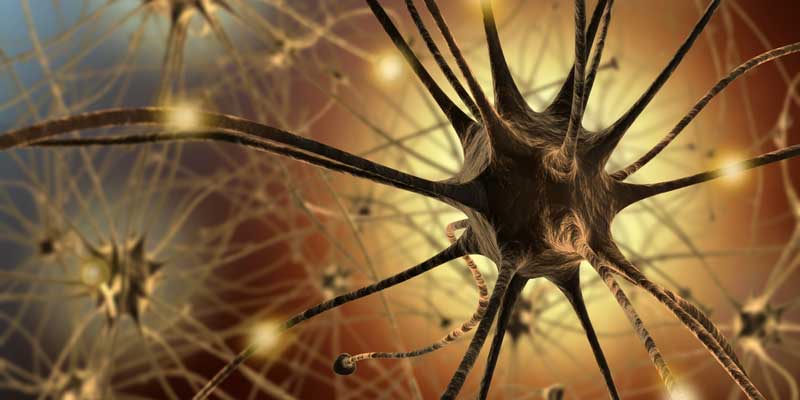
The most common issue with coaching is the current fad of coaches thinking they are rock stars and taking way too much credit for what they think is happening in training. I have seen world-class athletes train themselves, highly experienced coaches injure athletes, volunteer helpers be part of history, and master coaches produce champions like a factory line. I would argue most of the mistakes occur in thinking that what gets said in training, whether external or internal cues, are miracle cues.
Feedback is a cornerstone for athletes, in all honesty, but pontificating that a coach is using a specific type of cue is easy to state—a coach has to demonstrate specific changes with which we all can observe and measure. Don’t be seduced into coach-driven approaches that are highly embellished pseudoscience designed to sell educational opportunities. Look for coaches who simply want athletes to improve without interest in how they get there.
The Myth of Modern LTAD Concepts
For some reason, some of the biggest proponents of Long Term Athletic Development (LTAD) are strength coaches at advanced levels of their respective sport. While it makes sense at first glance to have a coach see the end results of an athlete’s development, a fair question is: If specialization is so bad, how do athletes continue to amaze us on the court and pitch? Most of the argument supporting LTAD is to play multiple sports to become a better athlete. This is perhaps the most ignorant suggestion I have ever heard for working with youth populations.
Athletes need a foundation of physical education first, as we need “immediate term human development,” and should wait for sports later when fundamentals are covered. Physical education is the most vital period to plant seeds, yet we see very little attention paid to efforts to help athletes enjoy games that develop movement skills. Competing more is just a lateral move with some slight variation, as playing sports more is not investing but spending in different ways. Athletes need to prepare for sport, not just do more tournaments with different rules and balls.
When America wanted to win a war, they injected the development of the military with the most glorified P.E. program imaginable. Now, strangely enough, the military uses sports performance consultants to fix their injury rates while the corner fitness gym provides early morning boot camps attended by pro athletes wanting to get tough. Athletes need to have a foundation of body control, not multiple sports encouraging specific strategy concepts and skills that are not global and systemic. If the athlete is playing a game that will pay them later, many talents will improve from playing modified versions of it, but the general long-term needs will be missing.
A wise approach is to think about games and activities that are fun and reward the process, not the side with the most talent or what compromises in group participation will elicit a better chance of winning. Being on three different sport teams without talent is just being on the bench in three different uniforms. Talented youth stars can play multiple sports and succeed immediately, as they learn better and are generally better athletes, but believing that playing the sports made them talented is forgetting that DNA is the master ingredient of potential. Different sports can widen exposure and help develop skills that are universal, but universal skills that are common denominators are evidence that playing lacrosse and playing soccer aren’t too far apart. Greg Louganis had issues with gymnastics and diving because the primary landing positions are radically different, thus he was forced to specialize for safety purposes.
Athletes who are not prepared to handle the physical side of sport will not benefit from being worked year-round. It’s easy to use the term “play a sport,” but anyone putting effort into a 90-minute soccer game at the pro level can attest that it’s a strain. Therefore, thinking that it’s so easy for kids to do this is a bad thought process. Kids need to play more games and engage in less competition, and they need more general preparation and less total sports competition.
Global and Systemic Performance Capacity
Several coaches have made some attacks on general training abilities, such as linear speed, jumping ability, strength development, and fitness without specificity. General training raises the ceiling, as it’s hard to have amazing field speed when an athlete’s base is slow as a snail. The capacity of any biomotor ability is essential to teaching, as prerequisites exist in order to perform specific skills that are physically demanding. Many coaches admire the pure genesis of what Barry Sanders could do on the field, but so far no “movement quality” coach is taking credit and saying “I taught him that!” We, as coaches and fans, must appreciate the work done to support the software, as the legs of Barry came from iron and practice, not just from his creativity and talent.
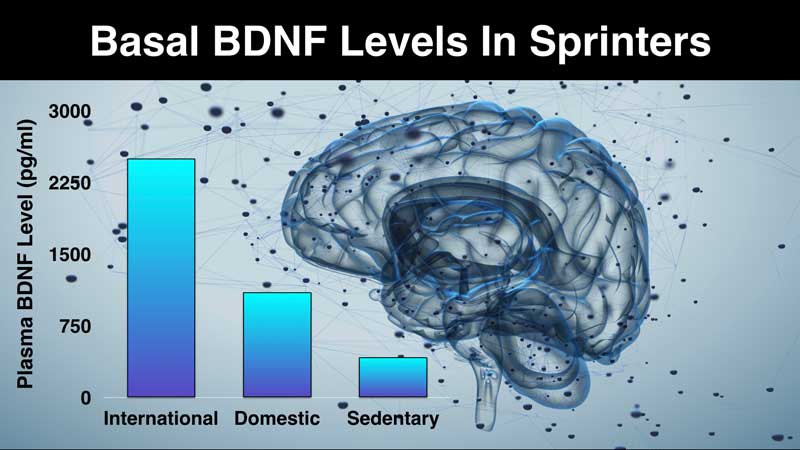
Gross abilities in power, coordination, and conditioning expand the support to specific and narrow skills, so it’s not a crime. Many agility and positional coaches do have valid points that the fastest and most powerful are not always the most successful on the field, but isn’t their job to take talent and help them succeed in the athlete’s sport? The strongest athletes may not make the basketball team, but it’s still the strength coach’s role, for the most part, to make them stronger. Raising the physical capacity offers a better chance to reduce injuries and shift specific movement strategies forward, and should be seen as an advantage.
The primary reason for improving global performance capabilities is to allow skills to be nurtured. An athlete can’t prepare for agility if they are out of shape, no matter how knowledgeable the coach is on skill acquisition. Skill and speed or power are not mutually exclusive, but very symbiotic with one another.
Combining Training and Teaching During Sessions
Empowering athletes is giving them the awareness and process to improve what they need to do specifically in their sport, not telling them what to do. For some reason, training is stereotyped as doing things with effort and massive repetition without technical refinement. Teaching is about athletes learning, and training is about athletes controlling their bodies—they are congruent processes. Time and energy don’t need to be divided for either, or for scenarios with game or competition preparation. If done right, teaching during training accelerates learning, and training, without the paralysis caused by the analysis of overcoaching, can rapidly help athletes acquire skills.
Many athletes have self-organized their technique by just expressing their talents during activities they enjoy and want to improve on. Now we have coaches taking credit for not taking credit; meaning they are celebrating not being part of the process by overstepping their boundaries for development. True, knowing when to say nothing is probably more important, but coaches should think about the ratio of instruction of either new information or flow-like periods of training that just allow athletes to prune errors or inefficiencies.
Training without learning likely reinforces the acquired skills more deeply without visible changes, but coordination being observationally silent doesn’t infer that improvement isn’t happening. An athlete having a similar technique with higher outputs and contraction rates (including relaxation) is part of coordination; it’s just that the movement doesn’t have much kinematic change. Kinetics, or forces, is motor-learning evidence as well.
What to Measure With Movement and Performance
Like teaching and training, motor learning is not a stranger to objective and useful evaluation. Strangely, in a world where data is the new oil, measurement, like linear speed or general power, is a crime. A standard of assessment of improvement must be shared, or no real evidence of positive change can be proven. Just as SWC (smallest worthwhile change) is a standard in general sports science, there is a need for a similar metric for movement strategy and skills for the motor learning and pedagogy field. Improvement must be functional, and functional means an advantage that is clear and measureable, not shrouded in vague, fluffy science fiction.
Improvement must be functional, and functional means an advantage that is clear and measureable. Share on XThe measurement of movement enhancement that provides a performance benefit needs to show up with a strong tangible improvement. Whatever the chosen test—provided it’s valid and relative—it must give an advantage that shows up clearly to the average coach. Coaches sometimes fight for the 1%, but the battles to get that small change need to be clear and decisive. Video and chronographs are instrumental in showing how gifted athletes improve the most-coveted advantage in sport: creating time and space. Tom Brady, who is a master at reading the available opportunities in his position, has a noticeable advantage (on average) from snap to throw over his peers. Athletes with the ability to fool or be elusive create space from subtle gestures; something that is hard to spot, but not invisible to good video analysis.
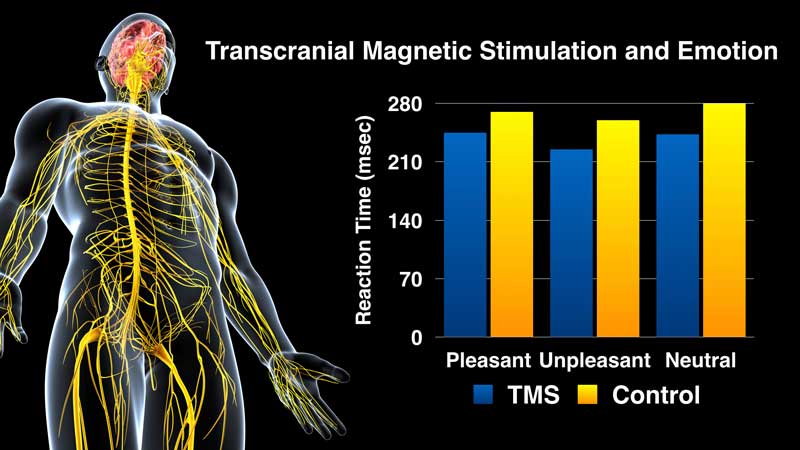
Other tests can be done that are more subjective and hit criteria, specific milestones, or benchmarks proven to show a statistical and historical impact to results on the court or the track. While many field tests and compartmentalized scrimmaging and practices are not perfect options, they do meet the demands of practice variability with chaos while fulfilling a systematic way to progress a skill set. Most team sports skip this area too much, as the gap of instructing tactical abilities and strategic rehearsal seems like it’s not replicable or scalable with academies and development centers. While talent is important and the primary asset for success, many academies or scholastic areas responsible for development also have the pick of the litter in recruitment. This makes it difficult to see how they are demonstrating measurable influences outside of playing games, training, and feeding the student athletes.
Why You Should Create Your Own Self-Assessment
Coaches are too hard on themselves or, conversely, believe their own hype way too much, so why a self-assessment? The reason coaches should create a self-assessment is that only they know their intentions, whereas results are often clear to everyone. A self-assessment is not a coach necessarily evaluating themselves internally; it’s a way to anonymously reveal on paper what they want to get out of the process and compare how they view themselves to their own training records. When confirmation bias runs deep, it’s useful to help colleagues who are more likely to share honest feedback then look for fanboys to support what simply is not true.
After learning the hard way, I now ask three easy questions:
- Is the athlete enjoying the process during the session?
- Is the athlete finding the process rewarding and interesting?
- Are the athletes growing and improving at a rate that satisfies them?
I failed to address Question No. 1 for about 10 years, because the athletes were independent and found ways to make practices better without interfering with the training. But I was awful at creating something fun. After we won our league title and went undefeated in our conference, the team I was coaching confronted me about not having fun. Since then, the first biomotor abilities planned on my periodization chart are all the things I enjoyed in sport, in and out of training. The assistant coach who provided much of the comic relief during practice left, and a younger coach came in and simply modeled my shortcomings with a focus on training. In large-group training I was a general, but I needed to be a sergeant with them more often and individually.
Now, mistakes are smaller and diverse, and I enjoy self-reflection from activities such as coaching development. At the NSCA conferences, Tim Pelot had the entire audience invest a few minutes in determining what their core values are. When I had to perform this self-evaluation, it made me focus on connecting my beliefs to my practice. I highly recommend looking at results, distribution of resources, debriefing sessions with athletes, peer reviews, and personal coaching goals set each year to self-evaluate.
Remember to Have Fun and Let the Ego Fade
Joy is not easy to measure, but when everyone is working hard and still having fun, improvement will occur naturally. Environment is important, and a personal connection to athletes is part of the equation for motor learning. It’s hard to take risks or make positive changes when the athlete doesn’t want to be there and doesn’t want to work with the coach, no matter how great their goals and dedication are. When ego becomes the enemy, the coach is the student and we are all part of the teaching process. My suggestion is to be humble and focus on what the athlete can do without you, and then the value of what you do with them skyrockets.
Since you’re here…
…we have a small favor to ask. More people are reading SimpliFaster than ever, and each week we bring you compelling content from coaches, sport scientists, and physiotherapists who are devoted to building better athletes. Please take a moment to share the articles on social media, engage the authors with questions and comments below, and link to articles when appropriate if you have a blog or participate on forums of related topics. — SF
[mashshare]

